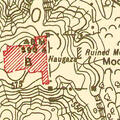Animal movement on the hoof and on the cart and its implications for understanding exchange within the Indus Civilisation
It seems to be an adage around the ancient Indus research that solving one mystery simply surfaces another. This is the case with this paper. It takes on the question of ground – land – transportation in ancient Indus times only to find that larger answers around transport remain fuzzy.










